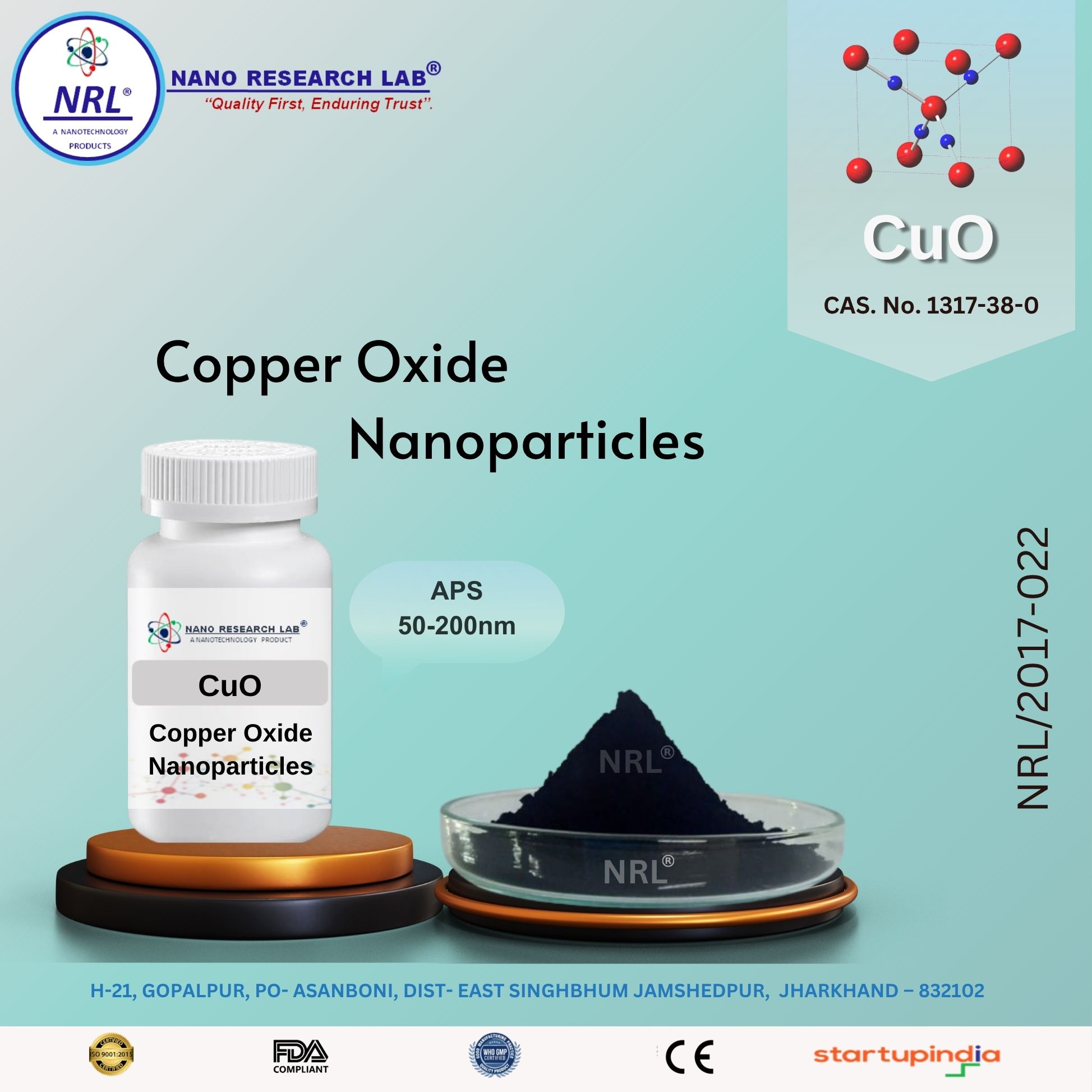
Copper Oxide Nanorods (CuO, width 25-30nm, length 50-200nm, purity 99.5%)
₹1475.00
Copper Oxide Nanorods (CuO, width 25–30 nm, length 50–200 nm, purity 99.5%)
Technical Specifications
Property | Specification |
|---|---|
Chemical Name | Copper(II) Oxide (CuO) |
CAS Number | 1317-38-0 |
Molecular Weight | 79.55 g/mol |
Purity | ≥ 99.5% |
Appearance / Color | Black Fine Powder |
Particle Shape / Morphology | Nanorods |
Dimensions | Width: 25–30 nm; Length: 50–200 nm |
Crystal Structure | Monoclinic |
Density | 6.3 g/cm³ |
Specific Surface Area (BET) | 35–60 m²/g |
Melting Point | 1326 °C |
Boiling Point | Decomposes above 2000 °C |
Solubility | Insoluble in water; soluble in acids and ammonia solution |
Band Gap Energy | ~1.4 eV (semiconducting) |
pH (in aqueous suspension) | ~6.5–7.0 |
Stability | Stable under normal conditions; may reduce to Cu₂O or Cu under reducing atmosphere |
Key Features
High Purity (≥ 99.5%) ensures excellent performance and minimal contamination.
Nanorod Morphology: Provides high aspect ratio and directional charge transport.
Uniform Dimensions (25–30 nm width, 50–200 nm length) for consistent results in applications.
Semiconducting Nature (p-type): Ideal for gas sensing and electronic devices.
Large Surface Area: Enhances catalytic and photocatalytic activity.
Thermal and Chemical Stability: Suitable for high-temperature and reactive environments.
Antimicrobial Activity: Effective for coatings, filtration, and biomedical applications.
Applications
1. Catalysts & Photocatalysis:
Used in oxidation/reduction reactions and photocatalytic degradation of pollutants.
Nanorod morphology improves active surface sites and light absorption.
2. Gas & Chemical Sensors:
High aspect ratio aids sensitivity and response time in detecting gases like H₂, CO, and NH₃.
3. Energy Storage & Conversion:
Applied in lithium-ion battery electrodes and supercapacitors.
Enhances charge transport and cycle stability due to 1D nanostructure.
4. Electronics & Optoelectronics:
Used in solar cells, thin-film transistors, and semiconductor devices.
Exhibits strong photoconductive and rectifying behavior.
5. Antimicrobial & Environmental Uses:
Incorporated into coatings, paints, and filtration media for antibacterial protection.
Effective in water treatment and pollutant removal systems.
6. Research & Nanotechnology:
Ideal for fundamental studies on 1D CuO nanostructures.
Used in synthesis of CuO-based nanocomposites and hybrid materials.
